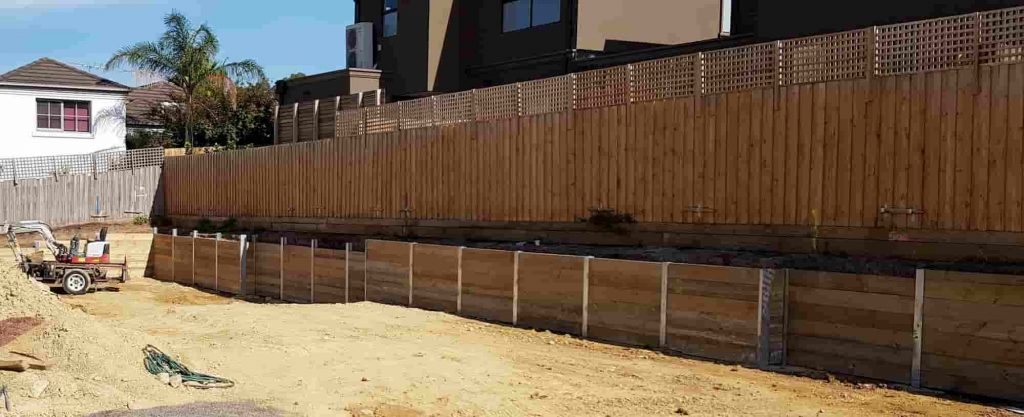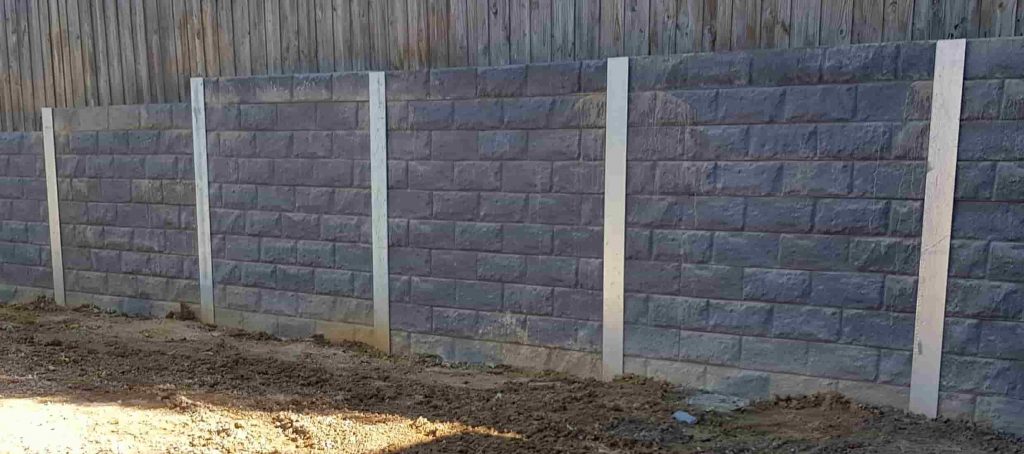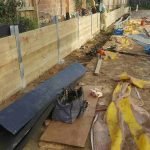Introduction
When it concerns landscaping and construction, among the most crucial factors to think about is the kind of soil on your property. Understanding soil types with your retaining wall installer's help can make a considerable difference in guaranteeing the stability and longevity of your retaining wall. Keeping walls serve not only as aesthetic enhancements but likewise play an essential function in managing soil disintegration and offering support in sloped locations. This guide will delve deep into the intricacies of soil types, their qualities, and how they interact with different materials like timber sleepers, concrete sleepers, and H beams
Understanding Soil Types with Your Retaining Wall Installer's Help
What Are Soil Types?
Soil types are classified based on their physical and chemical residential or commercial properties. They can be broadly classified into sandy, clayey, silty, fertile, and peaty soils. Each type has its own distinct qualities that impact drainage, compaction, and total stability.
Why Is Soil Type Essential for Keeping Walls?
The type of soil directly affects the design and setup of keeping walls:
- Drainage: Some soils retain water while others allow it to drain pipes quickly. Weight: Different soil types have varying weights that can exert pressures on the keeping wall. Erosion: The susceptibility to disintegration differs with each soil type.
Common Soil Types Explained
Sandy Soil
Sandy soil includes large particles that produce large areas between them. It drains pipes quickly but might not hold nutrients well.
Pros:
- Excellent drainage Easy to work with
Cons:
- Low nutrient retention Susceptible to erosion
Clayey Soil
Clayey soil consists of really great particles that are firmly packed together. It retains water however drains poorly.
Pros:
- High nutrient retention Good for particular plant growth
Cons:
- Poor drainage Can expand or shrink considerably with moisture changes
Silty Soil
Silty soil is comprised of medium-sized http://kameronduss330.iamarrows.com/step-by-step-retaining-wall-setup-process-explained particles that are smooth to the touch. It holds moisture much better than sandy soil but drains poorly.
Pros:

- Good nutrient retention Holds moisture well
Cons:
- Compacts easily Susceptible to disintegration when wet
Loamy Soil
Loamy soil is a mixture of sand, silt, and clay. It is often considered the perfect garden soil due to its balance of drain and nutrient retention.
Pros:
- Excellent drainage Nutrient-rich
Cons:
- Can be pricey if acquired
Peaty Soil
Peaty soil contains a great deal of raw material, making it dark in color. It's typically found in damp areas.
Pros:
- Rich in nutrients Great for specific plants
Cons:
- Poor drainage Can be acidic
Choosing the Right Material for Your Retaining Wall
Timber Sleepers vs. Concrete Sleepers
When building a retaining wall, you have a couple of product alternatives - timber sleepers or concrete sleepers Each has its advantages depending on your particular needs.
Timber Sleepers
Timber sleepers use a natural appearance that blends well with gardens.
Advantages:
Aesthetic appeal. Easier to manage throughout installation. Cost-effective option.Disadvantages:
Prone to rot over time. May need more maintenance.Concrete Sleepers
Concrete sleepers supply resilience and strength for bigger walls or walls constructed on unsteady soil conditions.
Advantages:
Long-lasting. Requires less maintenance. Suitable for different designs.Disadvantages:
More pricey than timber. Heavier, needing more labor during installation.H Beams as Structural Support
For vertical loads or extra structural assistance in your retaining wall system, using H beams can be beneficial.
Benefits of H Beams:
Provide extra strength against lateral earth pressure. Ideal for steep slopes where additional support is necessary. Versatile usage in combination with both lumber or concrete systems.Soil Analysis Before Installation
Why Conduct a Soil Test?
Conducting a soil test before installing your retaining wall is vital due to the fact that it helps identify:
Soil structure (sand, silt, clay). pH levels impacting plant growth. Drainage abilities which affect wall design.How to Conduct a Soil Test?
You can either work with experts or do it yourself:
Collect samples from numerous areas at different depths. Use an at-home set or send samples to a lab for comprehensive analysis. Review results carefully; consult your installer for analysis associated to construction plans.The Role of Your Retaining Wall Installer
Choosing a Professional Installer
Hiring a professional installer ensures that all aspects-- from soil testing to wall construction-- are handled expertly.
What Makes an Installer 'Professional'?
Experience in numerous types of installations (timber sleeper vs concrete sleeper). Knowledgeable about regional policies and constructing codes. Strong portfolio showcasing previous projects.Questions to Ask Your Installer
Before committing:
What is your experience with various soil types? Can you supply references? What materials do you advise based upon my specific situation?Design Considerations Based on Soil Type
Factors Affecting Style Choices
When developing your retaining wall, think about these factors based upon your specific soil type:
1. Height & & Load Bearing Capacity
Taller walls require sturdier materials like concrete sleepers or H beams for structural integrity in clayey soils vulnerable to growth under moisture changes.
2. Drainage Solutions
Including perforated pipes behind the wall can help manage water pooling behind walls developed on sandy soils where fast drain is possible but needs careful preparing around stability concerns related to heavy rains affecting fertile soils too!
Construction Process Overview
Steps Associated with Structure a Maintaining Wall
Building any type of retaining wall includes a number of steps:
1. Initial Consultation
Discuss goals & & issues regarding landscape functions requiring support alongside preferred styles/materials such as timber/concrete alternatives offered within budget constraints!
2. Website Preparation
Clear location & & guarantee appropriate grading towards drainage outlets; mark out borders properly before digging starts!
3. Foundation Laying
A solid structure supports long-lasting performance-- particularly important when making use of heavier products like H beams!
4. Wall Construction

5. Final Touches
Add any complements preferred-- like caps atop concrete walls! Don't forget landscaping around base either!
FAQs about Keeping Walls and Soil Types
Q1: How do I know what kind of soil I have?
A1: A professional service can carry out a detailed analysis; additionally, do it yourself sets are available online for standard testing!

Q2: Can I install my own retaining wall?
A2: While possible if experienced enough-- employing professionals often saves headaches later on down roadway by making sure whatever satisfies regional codes!
Q3: The length of time will my retaining wall last?
A3: Depends heavily on materials utilized; wood may last 10-- 20 years while concrete might last over 50 years if correctly maintained!
Q4: What occurs if my wall collapses?
A4: Regular examinations assist recognize early warning signs before collapse takes place; seek advice from engineers right away upon observing any shifts/sinking!
Q5: Is plants useful near keeping walls?
A5: Yes! Specific plants can support surrounding earth while also enhancing visual appeals but should select carefully based upon root depth & & spreading out tendencies!
Q6: Do I need authorizations before building?
A6: Often yes-- but examine local guidelines initially since requirements vary commonly throughout municipalities relating to height/location limitations etc!
Conclusion
In summary, understanding numerous aspects associated specifically towards "Understanding Soil Types With Your Retaining Wall Installer's Help" plays an integral role when embarking upon this journey! From understanding how various materials carry out versus unique ground conditions through evaluating underlying earth structure prior appealing professionals-- each aspect contributes towards accomplishing successful results! Eventually investing time in advance pays off down road yielding aesthetically pleasing yet structurally sound options customized specifically according particular site obstacles experienced throughout process ahead!